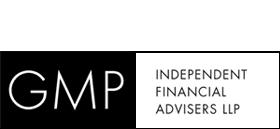10 funding opportunities not to be missed
January 26th, 2016
10 weeks to go until 6 April – 10 funding opportunities not to be missed
Pensions remain the most tax efficient way to save for retirement. And the new freedoms have removed any lingering barriers to accessing funds and passing on unused funds on death. With further cuts to funding limits around the corner, maximising pension funding becomes a must this tax year end.
To ensure you don’t miss an opportunity for a top up, we’ve put together 10 reasons to fund your pension before April.
1. Tax relief at highest rates
- Additional rate and higher rate taxpayers may want to maximise pension contributions now as the Government are currently reviewing the pension tax relief framework and relief at the highest rates may not be around forever.
- Again, carry forward can be used to maximise the contribution and whatever is actually paid by individuals in the current tax year will get tax relief at their highest marginal rate.
- We expect to find out the Government’s plans in the 16 March budget.
2. Annual allowance cut for higher earners
- Some high income clients will face a cut in the amount of tax-efficient pension saving they can enjoy from 6 April 2016. The standard £40,000 AA will be reduced by £1 for every £2 of ‘income’ clients have over £150,000 in a tax year, until their allowance drops to £10,000.
- For some clients, 2015/16 may be the last opportunity to enjoy the full £40,000 annual allowance.
- This might be the trigger to maximise pension funding this tax year for clients likely to be affected now or in the future.
3. Fund and protect above the new £1M LTA
- With the lifetime allowance set to fall to £1M in April, there will be some high net worth individuals weighing-up the pros and cons of electing for the new ‘fixed protection 2016′ to lock into a £1.25M LTA. But they’ll have to stop paying into pensions after 5 April 2016. So this only leaves a short window to maximise their tax efficient contributions and build a bigger retirement pot to protect.
- In addition to fixed protection, there’s the option of ‘individual protection 2016′. This will give an LTA of between £1M and £1.25M – but unlike fixed protection, further savings can be made. A fund of £1M or more as at 5 April 2016 is needed to choose this option, and so further saving before this date may be needed to push it over this limit.
4. Additional Annual Allowance for 2015/16
- To achieve the full alignment of pension input periods (PIPs) with the tax years from April, the transitional rules for the current year could see some clients able to pay an additional £40,000 into their pension before 6 April 2016.
- The transitional rules effectively split 2015/16 into two mini tax years either side of the summer Budget (8 July).
- Consequently, there’s an increased annual allowance for the year. £80,000 is available for the pre-Budget part of the tax year and any unused part of the £80,000 (up to a maximum of £40,000) can be paid before 6 April 2016.
5. Boost SIPP funds now before accessing flexibility
- Anyone looking to take advantage of the new income flexibility for the first time may want to consider boosting their fund before April, potentially sweeping up this years full £40,000 plus any unused allowance carried forward from the last three years.
- This is because once ‘income’ has been accessed under the new rules, the annual allowance for money purchase schemes will drop to £10,000 and any unused carry forward allowances will be lost forever.
- Anyone in capped drawdown before April 2015, or who only takes their tax free cash, will retain the £40,000 allowance.
6. Don’t miss the chance for a £50k carry forward
- The maximum carry forward of unused allowances for the current year is £140,000, being £50,000 from each of the 2012/13 and 2013/14 years plus £40,000 from 2014/15.
- Next tax year this will drop to £130,000, as another £50,000 drops off the scale, before it settles at £120,000 in 2017/18 – providing there are no further drops in the annual allowance.
- Remember that, as a result of aligning all PIPs with the tax year, some clients who were previously already contributing to their 2016/17 PIP may now be able to go back to 2012/13, as their current PIP will now close on 5 April 2016.
7. Dividend changes and business owners
- Many directors of small and medium sized companies may be facing an increased tax bill next year as a result of how dividends will be taxed. And a pension contribution could be the best way of cutting their overall tax bill, while still receiving the same level of benefit.
- And, of course, if the director is over 55 they now have full unrestricted access to their pension savings.
- An employer pension contribution enjoys the same NI savings as paying themselves a dividend but, more importantly, is not taxable in the director’s hands. Currently directors pay no additional tax on dividends which sit below the higher rate threshold. From April, all dividend income greater than any unused personal allowance and the new £5,000 allowance will be taxable.
8. Recover personal allowances
- Pension contributions reduce an individual’s taxable income. So they’re a great way to reinstate the personal allowance.
- For a higher rate taxpayer with taxable income of between £100,000 and £121,200, an individual contribution that reduces taxable income to £100,000 would achieve an effective rate of tax relief at 60%. For higher incomes, or larger contributions, the effective rate will fall somewhere between 40% and 60%.
9. Avoid the child benefit tax charge
- An individual pension contribution can ensure that the value of child benefit is saved for the family, rather than being lost to the child benefit tax charge. And it might be as simple as redirecting existing pension saving from the lower earning partner to the other.
- The child benefit, worth over £2,500 to a family with three kids, is cancelled out by the tax charge if the taxable income of the highest earner exceeds £60,000. There’s no tax charge if the highest earner has income of £50,000 or less. As a pension contribution reduces income for this purpose, the tax charge can be avoided. The combination of higher rate tax relief on the contribution plus the child benefit tax charge saved, can lead to effective rates of tax relief as high as 65% for a family with three children.
10. Sacrifice bonus for an employer pension contribution
- March and April is typically the time of year when many companies pay annual bonuses. Sacrificing a bonus for an employer pension contribution before the tax year end can bring several positive outcomes.
- The employer and employee NI savings made could be used to boost pension funding, giving more in the pension pot for every £1 lost from take-home pay. And the client’s taxable income is reduced, potentially recovering personal allowance or avoiding the child benefit tax charge.

